Every year Laphroaig releases a “Cairdeas” limited edition, intended to reward their “Friends of Laphroaig” aka repeat customers. “Cairdeas” is Scots Gaelic for “Friendship”, after all. Each year’s expression is a different take on Laphroaig, and the 2016 edition (which is still available on some store shelves or online if you hurry) is finished in hogsheads that were previously used to age Madeira wine. Madeira is a sweet fortified wine from the Madeira islands, a Portuguese archipelago off the coast of North Africa. The sweet wine itself is similar to sherry and port.
It’s not terribly unusual to age whisky in Madeira casks (Glenmorangie’s Private Edition bottling, Bacalta, uses them), although it’s not all that common to see peated scotch finished in fortified wine casks. Cairdeas 2016 is bottled at a potent 51.6% ABV and retails for around $80, while it’s still available. The whisky is NAS, but it uses “fully-matured Laphroaig” before finishing, which in previous years was code for 8 years old plus maybe a year or two in the wine barrels. As is usual with NAS, you just don’t get to know the exact age. If that bothers you (I’m looking at you, Jeff) then just vote with your wallet.
Nose: Unmistakably Laphroaig, with an aroma evincing seaspray-battered coastlines, boggy with brine and seaweed and sea grasses. As with other Laphroaigs, the peat smoke is heavy on peat and light on smoke, giving a sense of smoldering peat rather than outright fire. Underlying the peat is a thin layer of sweetness, like a bushel of plums tossed into the kiln along with the rest.
Palate: Medium bodied. Sooty peat dominates, while an incredibly gentle tongue burn for 51.6% ABV bakes your tongue. Fresh apple cider, maraschino cherries, and dates balance the herbal, medicinal peatiness.
Finish: Long. Here, the peat becomes ashy and betrays some bitter elements. The fruit is subdued but present, clashing slightly with the bitterness, but conveying a sense of cocktail bitters (sweet, bitter, medicinal, herbal). The cognitive dissonance is familiar to me from other sherry-aged peat monsters, and is something that I’m sure I could learn to love with enough practice…
With Water: A few drops of water dull most of the aroma, revealing instead a sticky dried prune note. The tongue burn is further diminished, but the whole becomes somewhat muddier and indistinct. Only add water if you feel the whisky is too hot when taken neat.
Overall: An unusual, decadent take on the standard Laphroaig brashness. While most of me enjoys the layering of fruit and peat, a small part misses the straightforward intensity, austerity, and rough edges of the Laphroaig 10, which seems to say, “I don’t need any of that fruity nonsense”, and which comes with an age statement to boot. Despite my quirks, I can say that this is an accomplished, well-balanced, and rewarding dram at a perfectly reasonable $80, although Ardbeg Corryvreckan (a peated whisky with a distinctly different style) beats the pants off of this for the same (or similar) price.


About The Distillery
The heavily peated Laphroaig, pronouned “La-froyg”, was established on the southern coast of Islay in the mid 1820s. Laphroaig’s medicinal, seaweedy, ‘iodine’ flavors may be derived from its local, hand-cut peat, which is used to dry malt in its own floor maltings. The local peat is more fibrous than peat used by the Port Ellen Maltings on Islay, where other Islay distilleries source their peat. Laphroaig does source 80% or more of its malt from Port Ellen, since the maltings are too small to meet all of the distillery’s demand. Process water flows via a burn from the Sholum Lochs and collects in the Kilbride Dam. The water is highly acidic, but soft. The whisky is matured on-site, mostly in ex-bourbon casks from Maker’s Mark, in both dunnage and rack warehouses.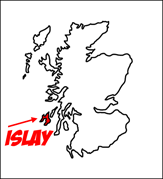


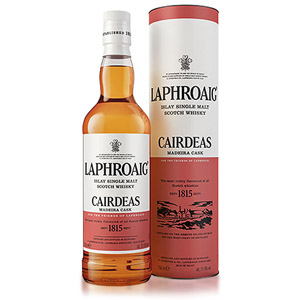
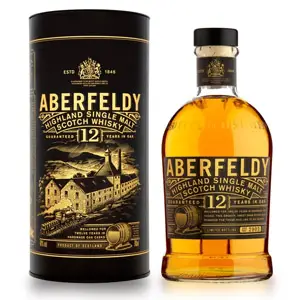
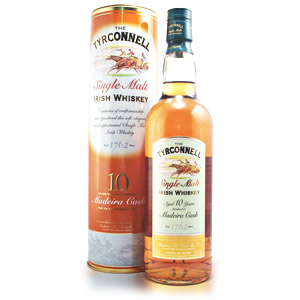
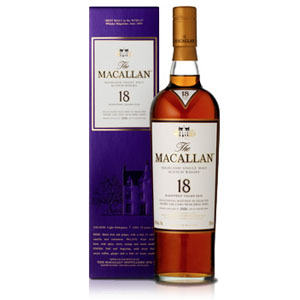


Sure, I’ll vote with my wallet – I’ll also comment here; the same people who tell me that age doesn’t matter to whisky in the first place really have no business making up ages. If Laph didn’t tell me the ABV, would they then make that up as well? Could a whisky then be “51.6% in someone’s opinion”?
The real problem, even for the most persistent boosters of NAS, is that, deep down, that they know – surprise, surprise! – that age does matter to whisky (because, yes, they frequently TASTE it), so they simply invent the missing information rather than either swallow the NAS bullshit whole or refute it altogether. But if the way this is marketed is really “OK enough” with people for them not to denounce its inherent nonsensical paradox (age matters here, but not over there, depending on what the industry says today – but maybe not tomorrow), they should have the courage of their conviction and not discuss age at all – just like Laphroaig does here.
The increasingly prevalent idea that whiskies with good consumer value can now “only” be delivered without age information is as transparently ridiculous as the irrational foundations of NAS itself – but such are the times; even well-known experts who supposedly know whisky won’t stand up for the truth. Many of the same people who genuinely appreciate age information when it IS rendered are, not surprisingly, also going to see that age information disappear as a result of their support for the industry’s nonsense ageless marketing. Nice job, folks – just remember: the industry didn’t “take away all the age statements” because, in the end, you did.
Despite my being a big fan of peat/sherry hybrids, I found this version of Cardais to be lacking any kind of distinctiveness. Within the Laphoaig family, I even prefer the Triple Wood to this one, and I certainly enjoyed the Port-finished 2013 Cardais (purple label) much better. Of course, the peat/sherry hybrid that still serves as the bellwether after all these years is Ardbeg Ugy. Despite a valiant effort, I have never found anything in the class that comes close to its flawless integration.
If you love Laphroaig but don’t savor the wine finishes, make sure to seek out the 2015 Cardais (green label). It was the 200th anniversary edition and uses 100% floor malted barley through the two smaller/older stills. It’s between 11 and 12 years old (straight from the mouth of the Master Distiller) and was matured in first-fill bourbon barrels in Laphroaig’s Warehouse No. 1 by the sea. In my opinion, this particular expression stomps all over the classic 10 and reminds me very much of the fabulous and now discontinued 18. Truly the most enjoyable Laphroaig I have ever had.
Nice ad for Laphroaig but, sorry, somebody’s word-of-mouth age non-guarantee over the internet really isn’t worth the label paper no one could be bothered to print it on. If people want to know why the 18’s been discontinued, they only have to look in the mirror.
Look at you, Jeff! Getting shout outs in the reviews themselves now!
A pre-emptive strike!
https://youtu.be/THEQHTysRus. Yup 2015 is 12 yo, thanks.
But, even in the video, it’s not all of 12 years old. The idea that anyone HAS to go to the internet to find age information that they CAN’T get on the label, at point of purchase, is ridiculous.
The idea that the 2015 Cairdeas is reliably 11+ years old (due to the unambiguous story on when it was laid down), BUT UNSTATED ON THE LABEL seems so weird, at least at first. I suppose the reason must be that they specifically want the whole modern Cairdeas line to be NAS so that the lack of age statements in future releases doesn’t seem conspicuous in comparison.
That seems like a real testament to how effective NAS labeling must be, relative to a low age statement, in the sales and prices the bottles command.
Yeah, the issue, however, isn’t – or shouldn’t be – whether NAS is effective marketing; it should be whether what it says about whisky is true.
And this applies to consumers’ support of NAS just as it does that of producers. People who know ANYTHING about whisky know that its profile is dramatically affected by age. While NAS labels enable people to pretend that age doesn’t matter or, just as importantly, that the products they buy are older than they actually are – how many times have you read the equivalent of “but there’s a lot of older whisky in there, it’s just that the age statement gets ruined by a teaspoon of 8 y.o.”? – there is NO WAY IN HELL that the industry can magically “select” the whiskies that are and “aren’t” affected by maturation, much less through a label information choice.
Could the relevance of ABV also be “suspended” by omitting it? Could we all fly if all mentions of gravity were erased tomorrow?
Age matters to whisky. Whisky is aged BECAUSE aging it matters to whisky. If telling the truth about whisky doesn’t matter, what is the point in writing about it – UNLESS you’re in marketing?
Jeff, help me understand your comment. It feels like you’re arguing against something you think I said.
Is it a reply to what I said about the apparent sales success of the NAS Cairdeas series?
Are your questions rhetorical, or are they directed at me?
No, the questions are rhetorical – although the implications should be clear – but one of my points is, whether NAS marketing is “effective” in this instance or not, that is not the only way in which that marketing can, or indeed should, be assessed.
Whether it makes anyone any money, NAS is simply demonstrably false in what it says, not about marketing, but about whisky.
By essentially claiming that the product is “ageless” or that its age isn’t “relevant enough” to put on the label in this case (but not in others), Laphroaig is actually misleading customers about the very nature of its product – that, quite selectively and contrary to physics, age is or can be “irrelevant”.
Although I can understand the obvious motives behind it, I just don’t find that everything that makes someone a buck is necessarily self justifying, so I think that one has to look beyond the marketing aspect to see what NAS says about the product itself.
I have most of the Cairdeas expressions going back 6-7 years. I found this one disappointing. The Madeira finish gives the whisky a harsh, even chemical quality. (OK, OK, “chemical” may seem an odd criticism coming from a Laphroaig drinker, which I most definitely am. Let’s just say there’s chemical and then there’s chemical . . . .) Better by far was the port finish a few years ago — not only tasty but sufficiently memorable that I sprang for a second bottle.
Sorry I missed it! I love a good Port finish.
I agree with Ben about this Madeira one. I’ve only been coming to the Cairdeas party since 2014 (so no porty 2013 goodness for me), but that 2014 is still the best for me. And that’s even after doing a side-by-side with the 2015 that everyone loves.
This 2016 Madeira is kind of sour or something. It was OK, but I felt no regrets about letting some friends drain the whole second half in one blitz at this year’s Burns Night supper.
Since I like the Select, I’m sure i will have to go look for this one. By your review I’m sure I will like it.
From the two different bottles I’ve had, I did not get the sour elements that some commenters here have reported. The madeira adds a fruity and playful element to the typical distillery flavors which I enjoy. It’s not especially complex but it suits my palate well; which generally leans towards Oogie vs Corry if you’re an Ardbeg fan.
I liked it too. I found a little burning sensation initially giving way to peated smokiness and a lingering sweetness. I haven’t tried the earlier versions but for $64 this was worth it.
I just gifted this to a friend based in part upon the Noob’s mostly positive review. I’m not a fan of stronger whisky in general, but the gift was well received, and upon sampling, the burn was manageable in light of the interesting interplay of Laphroaig peat reek and Madiera sweetness.
With all this discussion about NAS whiskies I would like to point out an exception: Lagavulin. They bottled their 200th year anniversary releases with age statements, with the least expensive bottling proudly stating that it is an 8 year old. It is often said that Islays do not need long aging to show character and perhaps that is borne out by the fact that two highly acclaimed Islay, Laphroaig and Talisker, are 10 year-olds. Not a far stretch to think that slightly younger blends of Islays with different finishes might also be very good whiskies. Too bad they haven’t got the gumption and bravado of Lagavulin.
Cheers.
Since my last post I have had the opportunity to taste the Cairdas Madeira finish and have to say that it was quite nice, and preferable to the travel exclusive PX Cask. As far as the NAS debate is concerned I prefer to know the age of the malt I am drinking but I cannot diss every NAS as if it is some sort of scam or deceptive practice. A poster here declared that age makes a difference. There is no doubt that it does, nobody claims that it doesn’t. The NAS scotches make no claim as to its age, it is a blend of different ages. The rules are that any age statement must declare the youngest age in a blend. Therefore if the distillery choses to freshen a blend of say 8, 10, and 15 year old with some distillate driven malt, even a small amount, they would have to declare it on the bottle even if it was a two or three year old. The same is true of the aged malt blends like the Rattray Cask Islay or Big Pete and even the Kirkland bottles with no distillery name. Surely the distillery is even more important than the age statement. Are these bottlings also a scam? As far as I am concerned, even if I would prefer to know the relative ages of the malt, it is what is in bottle that is more important. Last year I discovered that I preferred, by a long shot, the NAS Bowmore ‘Small Batch’ to the Bowmore 12. Unfortunately the former has discontinued while the 12 is still around.
Cheers ……… Mahmoud.